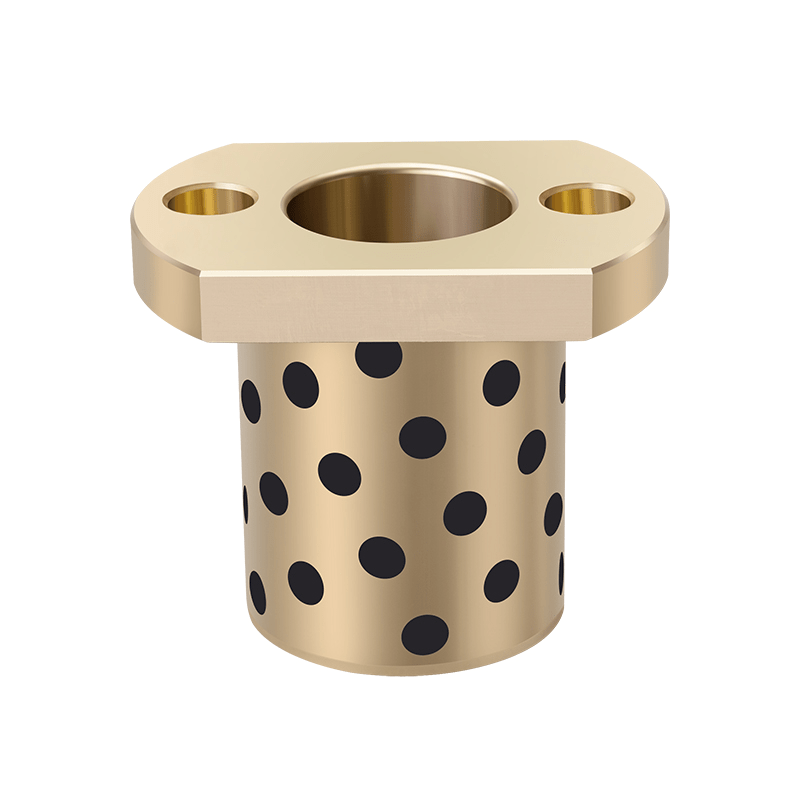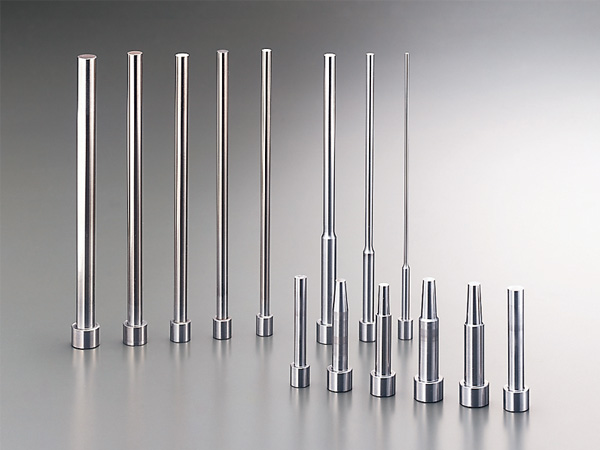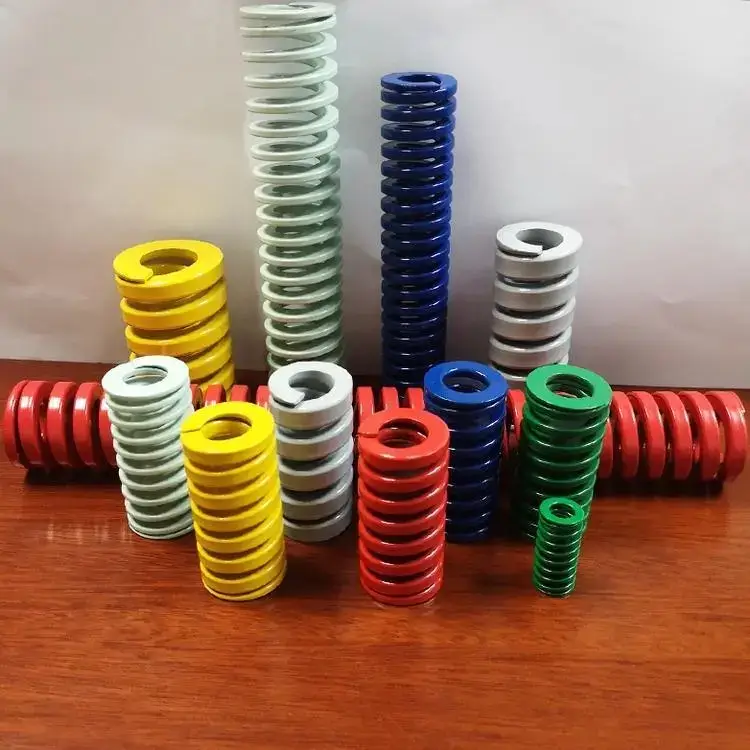Choosing Between Brass and Bronze Bushings
Brass and bronze are two common materials used in the manufacturing of bushings. These components serve critical roles in various applications, helping reduce friction, support loads, and provide longevity to machinery and equipment. Despite their similar-sounding names, brass and bronze bushings exhibit significant differences in terms of composition, properties, and ideal use cases.
Table of contents
Advantages Of Bronze Bushings
Bronze bushings, also called bronze bearings, are used in many industries because they have several benefits:
Strong and Can Carry Heavy Loads: Bronze is tough, so bronze bushings can handle heavy loads.
Resist Wear: Bronze is good at resisting wear and tear. This means bronze bushings last a long time and don’t need to be replaced often, which saves money.
Self-Lubricating: Bronze makes its own lubrication when it touches other surfaces. This reduces the need for extra oil or grease, keeping things moving smoothly.
Low Friction: Bronze bushings don’t create much friction, so parts move easily.
Don’t Rust: Bronze bushings are resistant to rust and corrosion.
Work in High Heat: Bronze can work in hot places without a problem.
Easy to Make: It’s easy to shape and make bronze bushings with high precision.
Cost-Effective: Bronze bushings are affordable and environmentally friendly.
Disadvantages Of Bronze Bushings
Bronze bushings, despite their many advantages, have a few disadvantages:
Cost: Bronze bushings can be relatively expensive compared to some other bushing materials due to the cost of the bronze alloy and the manufacturing process.
Lubrication Requirement: Bronze bushings require regular lubrication to reduce friction and prevent wear. Without proper lubrication, they can experience premature failure.
Initial Break-In Period: When new, bronze bushings may undergo a break-in period where they exhibit higher friction and may not perform at their best until this period is complete.
Limited Self-Lubrication: While bronze has some inherent self-lubricating properties, they are not as effective as fully self-lubricating materials like certain plastics or composite bushings.
Noise: In some cases, bronze bushings can produce noise, especially during high-speed or high-load applications, which may require additional noise-dampening measures.
Stick-Slip Motion: Bronze bushings may experience stick-slip motion, where they briefly “stick” before moving, causing uneven or jerky movement, especially when not properly lubricated or aligned.
Availability: Depending on your location and specific requirements, finding bronze bushings can be more challenging than readily available materials.
Advantages Of Brass Bushings
Brass bushings offer several advantages in various applications due to their unique properties and characteristics:
Good Machinability: Brass is known for its excellent machinability, which makes it relatively easy to shape and manufacture into complex bushing designs with high precision.
Corrosion Resistance: Brass bushings exhibit good resistance to corrosion, particularly in non-aggressive environments, making them suitable for use in many applications.
Low Friction: Brass has a relatively low coefficient of friction, which can help reduce wear and minimize the energy required for movement in machinery and equipment.
High Thermal Conductivity: Brass is a good conductor of heat, which means it can help dissipate heat away from the bushing and surrounding components, making it suitable for applications involving temperature variations.
Electrical Conductivity: Brass is an excellent conductor of electricity, making it suitable for certain electrical applications where electrical continuity is required.
Cost-Effective: Brass is often more cost-effective compared to some other materials used for bushings, making it an economical choice for various industries.
Self-Lubricating Properties: Over time, brass bushings develop a patina or surface layer that acts as a natural lubricant, reducing the need for additional lubrication in certain applications.
Ductility and Toughness: Brass bushings can absorb shock and vibration effectively due to their ductile nature, which can help protect sensitive components in machinery.
Availability: Brass bushings are readily available in various sizes and configurations, making them accessible for a wide range of applications.
Aesthetic Appeal: In applications where appearance matters, brass bushings can provide an attractive finish due to their golden or bronze-like color.
Disadvantages Of Brass Bushings
Lower Load Capacity: Brass bushings generally have a lower load-bearing capacity compared to some other materials like bronze or steel. They may not be suitable for high-load applications.
Wear Rate: Brass bushings can wear out relatively faster in high-friction and high-load conditions compared to materials with higher wear resistance, such as bronze or steel.
Limited Corrosion Resistance: While brass has some corrosion resistance, it is not as corrosion-resistant as materials like bronze or stainless steel. It may not be suitable for use in highly corrosive environments.
Limited Self-Lubrication: While brass can develop a surface patina that acts as a natural lubricant over time, it may not offer the same level of self-lubrication as fully self-lubricating materials like certain plastics or composite bushings.
Temperature Sensitivity: Brass has limitations in extreme temperature conditions. It may not perform well in high-temperature applications where materials with higher heat resistance are required.
Noise Generation: In some applications, brass bushings can generate noise, especially under heavy loads or high-speed conditions, which may necessitate additional noise-dampening measures.
Maintenance Requirements: Brass bushings often require regular maintenance, including lubrication, to ensure optimal performance and longevity.
Availability of Alloys: The properties of brass bushings can vary depending on the specific brass alloy used. The availability of specific alloys may be limited in some regions or for certain requirements.
Cost-Effectiveness: While brass is generally cost-effective, in some cases, the need for more frequent replacement due to wear may offset initial cost savings.
Bushing Material Selection: Brass or Bronze?
Brass bushings are typically used in low-load, low-speed, or applications where high friction performance is not required, such as home appliances, light machinery components, and musical instruments.
On the other hand, bronze bushings are suitable for high-load, high-strength, and applications that demand higher wear resistance, such as large machinery, automotive engine components, ships, and aerospace equipment.
When making a selection, factors like load, friction, cost, and environmental conditions should be taken into account. You can quickly choose as follows:
If your application requires high loads and wear resistance, choose bronze bushings.
If your application has lower friction requirements and budget constraints, you can opt for brass bushings.
Consider the appropriate corrosion resistance based on the corrosiveness of the working environment and temperature range.
If you are uncertain about which bushing material to choose, it is advisable to consult with a professional engineer or materials scientist for more specific guidance.







